Sizzling Mongolian Ground Beef Noodles Recipe for Cozy Nights
Mongolian ground beef noodles weave a delightful culinary story that transports you straight to the hearty kitchens of East Asia.
Savory spices dance through tender meat and silky strands, creating a symphony of flavors.
Quick and straightforward ingredients come together in less than thirty minutes.
Traditional recipes inspired this modern twist that feels both comforting and exciting.
Fragrant garlic and soy sauce infuse each bite with rich, umami depth.
Home cooks can easily master this satisfying dish that promises to become a weeknight favorite.
Grab your skillet and let’s turn simple ingredients into an unforgettable meal that will have everyone asking for seconds.
Mongolian Ground Beef Noodles Overview
Ingredients for Mongolian Ground Beef Noodles
Main Protein:Noodles:Sauce Ingredients:Aromatic Ingredients:Step-by-Step for Mongolian Beef Noodles
Step 1: Boil Noodles
Cook noodles following package directions.
Drain completely and let rest while preparing other ingredients.
Step 2: Brown Beef
Heat skillet over medium-high temperature.
Cook ground beef until nicely browned and crumbly.
Drain any excess fat from the pan.
Step 3: Infuse With Garlic
Sprinkle fresh minced garlic into the beef.
Stir and sauté for about 60 seconds until fragrant and golden.
Step 4: Create Flavor Sauce
Whisk all sauce ingredients together in a separate bowl until smooth and fully combined.
Step 5: Combine Sauce With Beef
Pour sauce mixture into skillet with beef.
Stir continuously until sauce thickens and coats beef evenly.
Step 6: Merge Noodles
Add cooked noodles to beef mixture.
Toss gently to ensure every strand gets covered in the delicious sauce.
Step 7: Garnish And Serve
Sprinkle green onions and sesame seeds on top.
Serve hot and enjoy your delectable Mongolian beef noodles.
Helpful Tips for Mongolian Beef Noodles
Flavor Variations of Mongolian Beef Noodles
Pairings for Mongolian Ground Beef Noodles
Storage Recommendations for Mongolian Beef Noodles
FAQs
The combination of soy sauce, brown sugar, and hoisin sauce creates a sweet and savory balance that makes the dish incredibly delicious and rich.
No, this version is not spicy. However, you can easily add red pepper flakes or sriracha if you want to increase the heat level.
Absolutely! Ground turkey or chicken works great as a substitute for ground beef in this recipe, offering a lighter protein option.
The noodles can be refrigerated in an airtight container for 3-4 days. When reheating, add a splash of water to help restore the sauce’s moisture and prevent the noodles from drying out.
Print
Mongolian Ground Beef Noodles Recipe
- Total Time: 25 minutes
- Yield: 4 1x
Description
Hearty Mongolian Ground Beef Noodles blend savory flavors from traditional Asian cuisine with comforting pasta. Quick weeknight meals become extraordinary when home cooks explore these simple yet delicious ingredients you can prepare in under 30 minutes.
Ingredients
Protein:
- 1 pound ground beef
- 8 ounces (226 grams) noodles (spaghetti or lo mein)
Seasonings and Sauces:
- 1/4 cup soy sauce
- 1/4 cup brown sugar
- 1 tablespoon hoisin sauce
- 1/2 teaspoon crushed red pepper flakes (optional)
- 1 tablespoon cornstarch
Aromatics and Garnishes:
- 3 cloves garlic, minced
- 1/4 cup water
- 2 green onions, chopped
- Sesame seeds (optional)
Instructions
- Prepare noodles according to package guidelines, ensuring they are al dente. Thoroughly drain and reserve.
- Heat a spacious skillet over medium-high temperature, browning ground beef until no pink remains. Eliminate excess rendered fat.
- Introduce minced garlic to the beef, sautéing for approximately 60 seconds to release aromatic flavors.
- Create sauce by combining soy sauce, brown sugar, hoisin sauce, water, and cornstarch in a separate mixing vessel. Whisk until smooth and uniform.
- Stream sauce mixture into skillet with beef, continuously stirring until sauce reaches a glossy, thickened consistency, approximately 2-3 minutes.
- Incorporate cooked noodles into the beef mixture, gently folding to ensure complete sauce coverage and even distribution.
- Transfer to serving dish, generously garnishing with finely chopped green onions and a sprinkle of sesame seeds for added texture and visual appeal.
Notes
- Swap ground beef with ground turkey or plant-based crumbles for a leaner or vegetarian version that maintains the rich, savory flavor profile.
- Control sodium intake by using low-sodium soy sauce and reducing added salt, which helps balance the dish’s overall taste without compromising authenticity.
- Enhance texture by slightly undercooking noodles before final mixing, allowing them to absorb sauce and prevent becoming mushy during the final tossing stage.
- Prepare sauce mixture in advance and store in refrigerator for quick weeknight meals, maximizing convenience without sacrificing delicious homemade taste.
- Prep Time: 15 minutes
- Cook Time: 10 minutes
- Category: Lunch, Dinner
- Method: Sautéing
- Cuisine: Chinese
Nutrition
- Serving Size: 4
- Calories: 580 kcal
- Sugar: 10 g
- Sodium: 900 mg
- Fat: 30 g
- Saturated Fat: 12 g
- Unsaturated Fat: 15 g
- Trans Fat: 1 g
- Carbohydrates: 45 g
- Fiber: 3 g
- Protein: 35 g
- Cholesterol: 85 mg

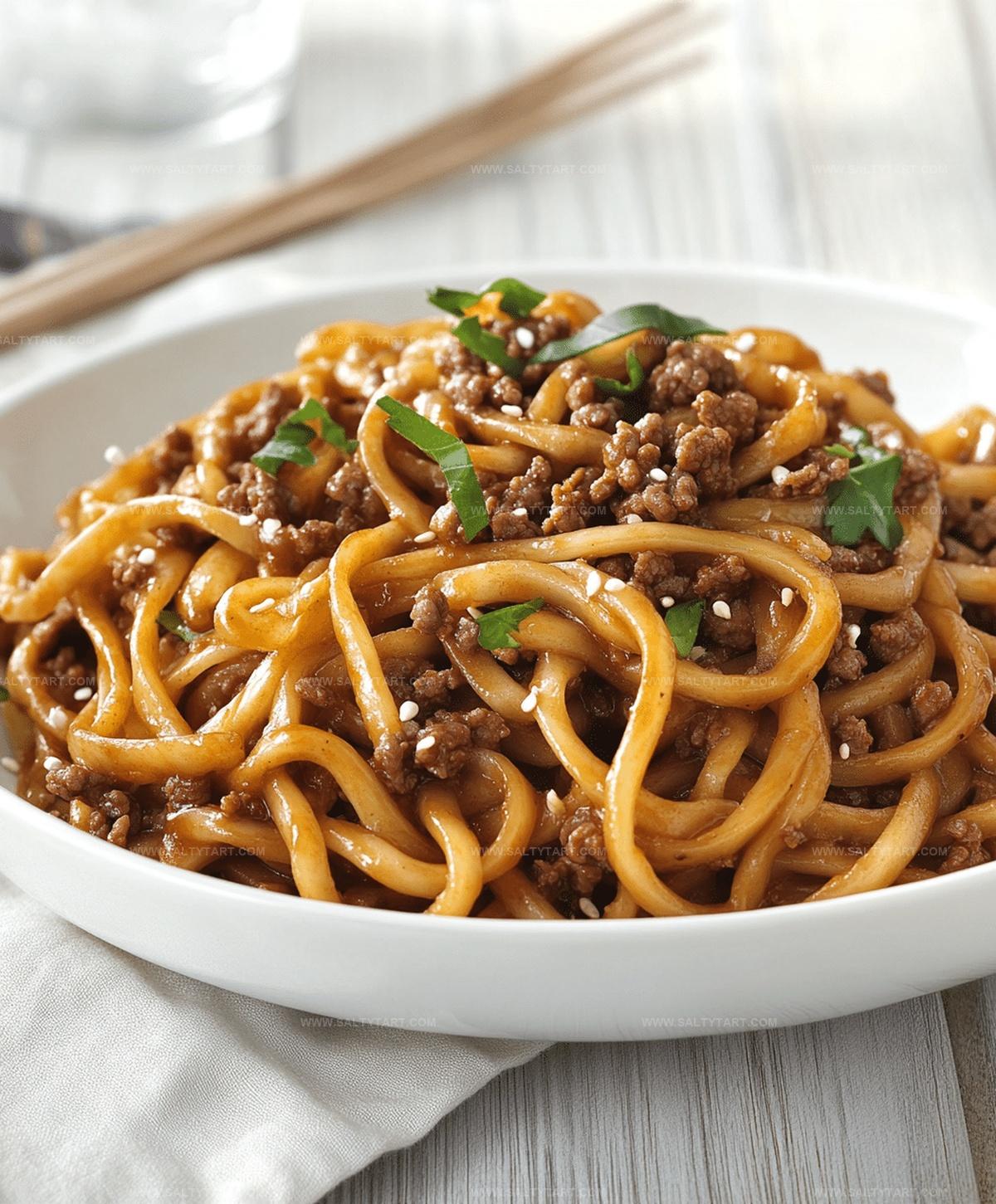
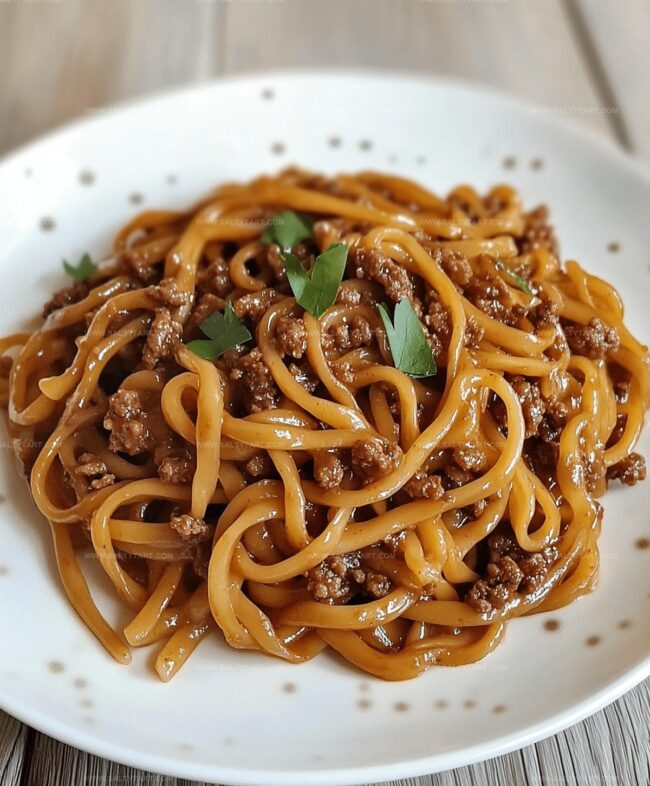
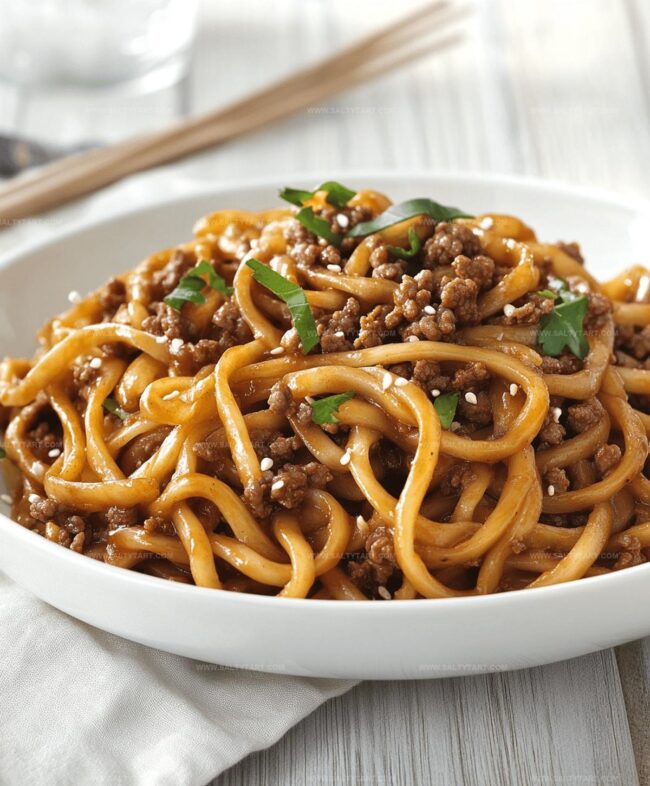
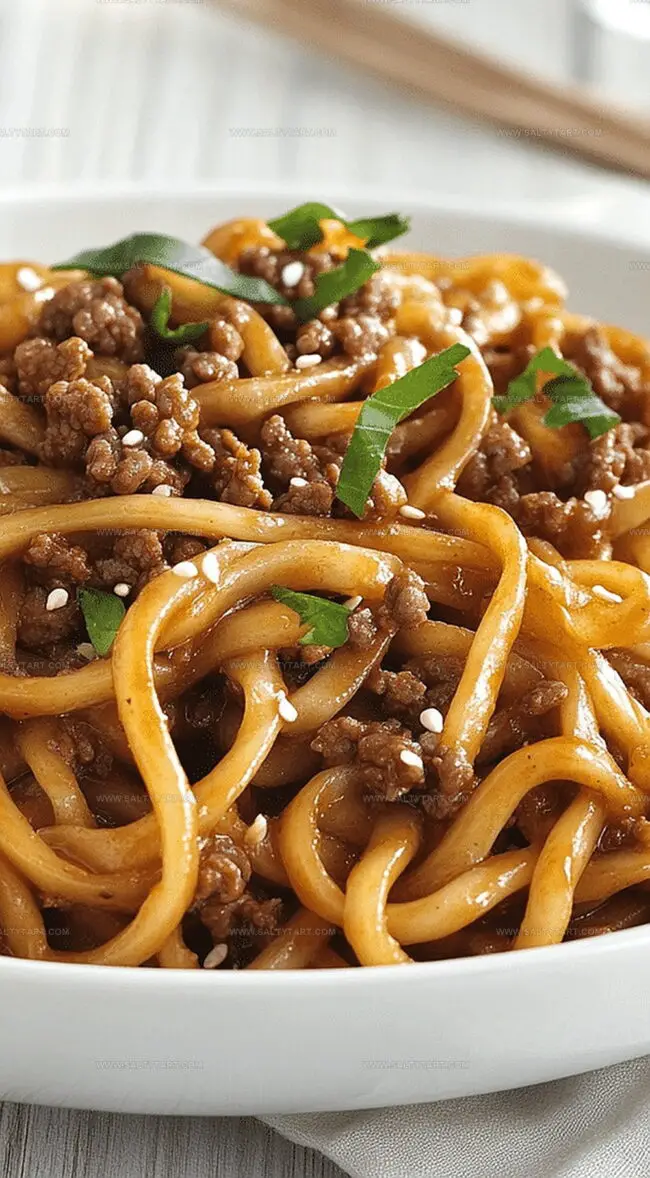
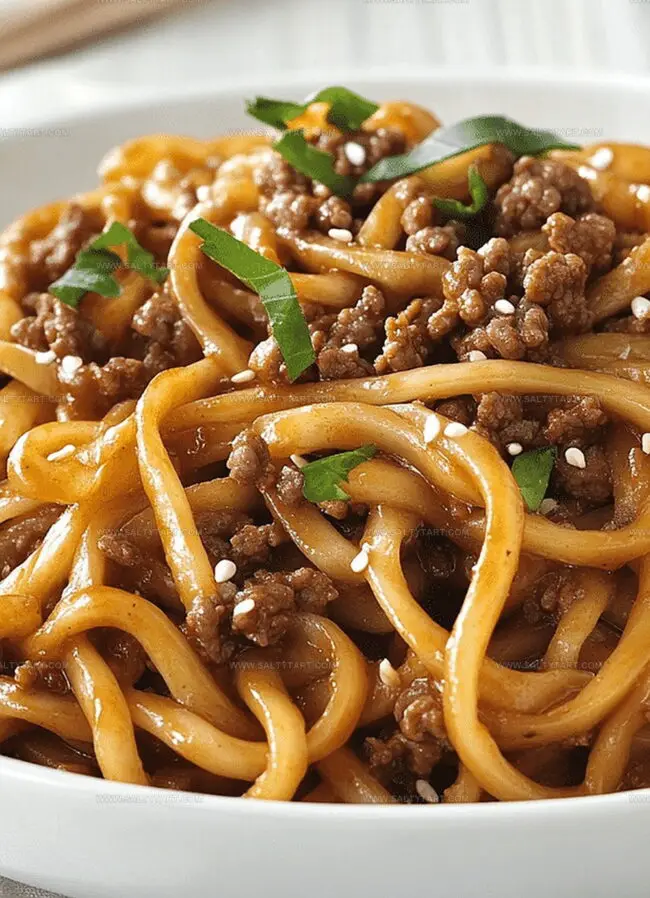
Jess Martinez
Contributing Recipe Writer & Nutrition Consultant
Expertise
Southwestern and Latin American cooking, Nutritional analysis and healthy recipe planning, Cultural food traditions, Modifying traditional dishes for better health
Education
Santa Fe Community College
Certificate in Culinary Arts
Focused on mastering the flavors and cooking methods of traditional Southwestern cuisine.
Jess’s love for bold, homegrown flavors led her straight into the world of Southwestern cooking and cultural nutrition.
After completing her Certificate in Culinary Arts at Santa Fe Community College, she made it her mission to show that good-for-you food can still taste incredible.
At saltytart.com, Jess shares vibrant, health-conscious recipes with roots in tradition but a fresh, modern twist. When she’s not testing new recipes, you’ll find her at local growers’ markets, tending her herb garden, or digging into food history books.